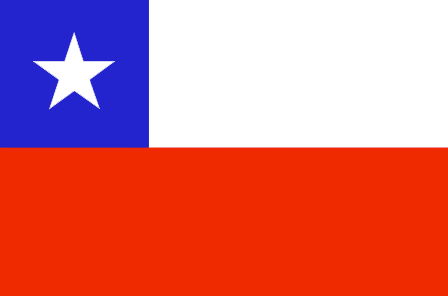Login form
Customs of Chile
Marriage and Family
 Most people wait until they have finished their education before getting married. Most men do not marry before age 22; most women marry between 18 and 23. Couples often date from one to three years before getting engaged. Traditional Christian wedding ceremonies are common. Divorce is legal.
Most people wait until they have finished their education before getting married. Most men do not marry before age 22; most women marry between 18 and 23. Couples often date from one to three years before getting engaged. Traditional Christian wedding ceremonies are common. Divorce is legal.
The father is considered head of the family, but the mother has considerable influence, and the relationship between husbands and wives is generally one of reciprocity. Men have tended to dominate private and public life in the past, but in recent years attitudes about the position and role of women in society have been changing. 33.2 percent (1999)
It is customary for Chileans to bear two family names. The father’s family name, which is the official surname, precedes the mother’s family name. People use either their full name or go by their father’s family name. Therefore, a person named José Felipe Correa Pérez could be addressed as Señor Correa or Señor Correa Pérez.
Eating
Many national dishes are prepared with fish, seafood, chicken, beef, beans, eggs, and maize. The main meal is usually eaten between 12:30 and 2:30 pm, and a lighter meal between 8 and 10 pm. Many people also have a snack of sandwiches and cookies or cakes in the afternoon. There are large supermarkets in major cities. Traveling markets, or ferias, sell fresh fruits, vegetables, meat, fish, and flowers in smaller cities and towns. What is eaten depends on the region, but popular dishes include empanadas de horno, which are meat turnovers with beef, hard-boiled eggs, onions, olives, and raisins; pastel de choclo, a baked meal of beef, chicken, onions, maize, eggs, and spices; cazuela de ave, chicken soup; and seafood casseroles and stews. Children enjoy eating sopaipillas, which are made from a pumpkin dough, deep fried, and sprinkled with sugar. Manjar, made by boiling an unopened can of sweetened condensed milk for hours, is used as a spread for bread and as a baking ingredient.
Chileans generally converse freely at the table. Forks are normally held in the left hand, knives in the right, and etiquette requires that both hands be kept above the table during a meal. Offers of second helpings should be initially refused, and finally accepted only if the host insists. When the meal is over, guests are expected to stay for more conversation. In a restaurant, a waiter can be summoned with a raised finger. As fast food increases in popularity, it is now no longer unusual to see people eating while walking in public, although many still consider it inappropriate.
Socializing
In
Titles are important when addressing Chileans. Señor (“Mr.”), Señora (“Mrs.”), and Señorita (“Miss”) are common for strangers and acquaintances, as are professional titles (Doctor, Director, Profesora). Don and Doña are used with the person’s first name for men and women, respectively, to show special respect and familiarity.
Much leisure time is spent socializing with family or friends, and weekend barbecues are popular. Unlike the custom in some parts of
Recreation
Popular recreational activities in
Holidays and Celebrations
Chileans celebrate the New Year on 1 January. They celebrate Good Friday (the Friday preceding Easter), Easter Saturday, and Easter Sunday. Labor Day is observed on 1 May, and 21 May is a day of remembrance for the Naval Battle of Iquique.
On 29 June, Saint Peter’s and Saint Paul’s Day, boats decorated with images of Saint Peter, the patron saint of fishermen, float from the seaside town of Valparaíso. This procession has been held annually since 1682.
Independence Day, 18 September, celebrates
Columbus Day on 12 October honors the Spanish explorer’s arrival in
Source: Encarta Interactive World Atlas

